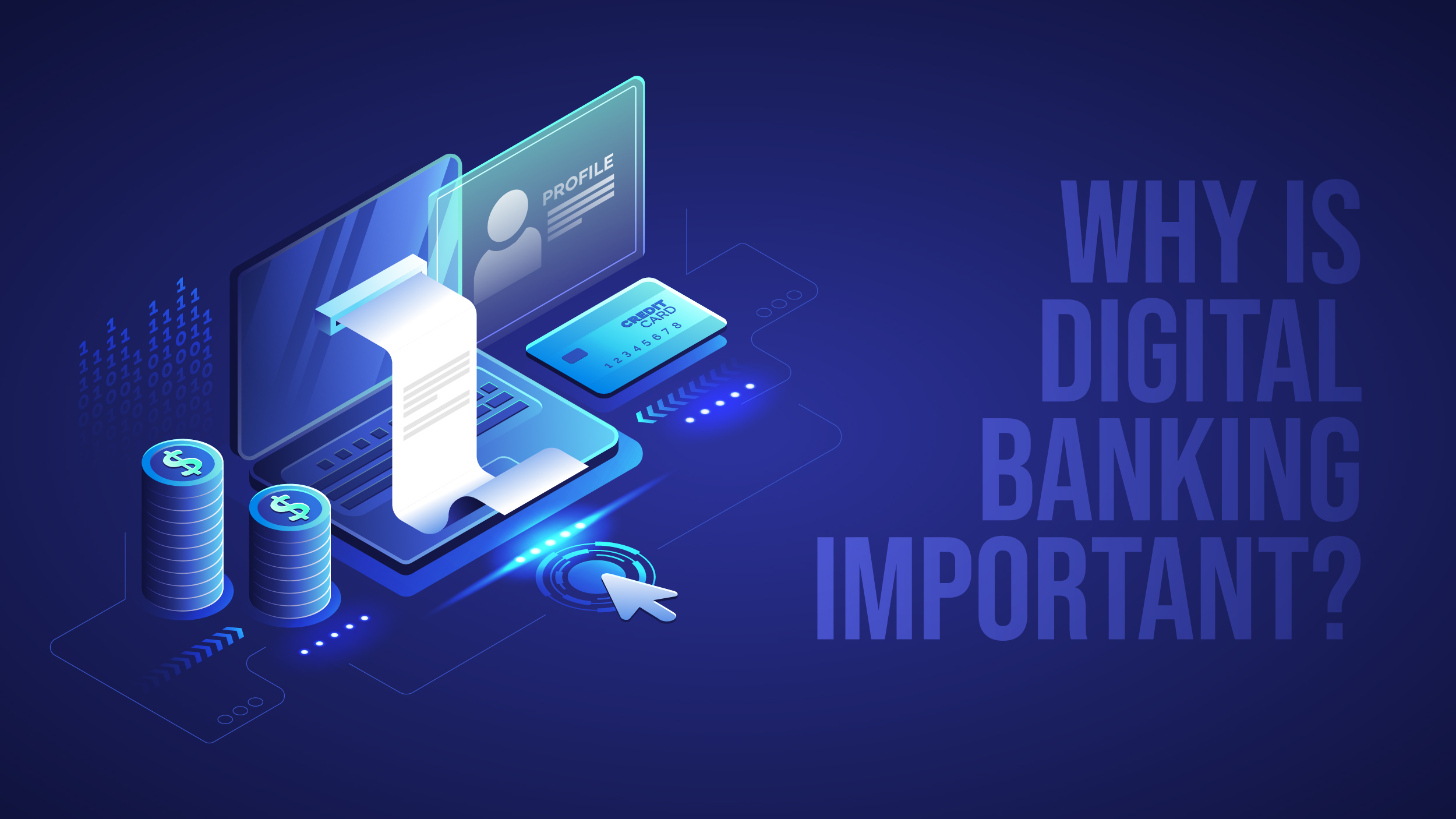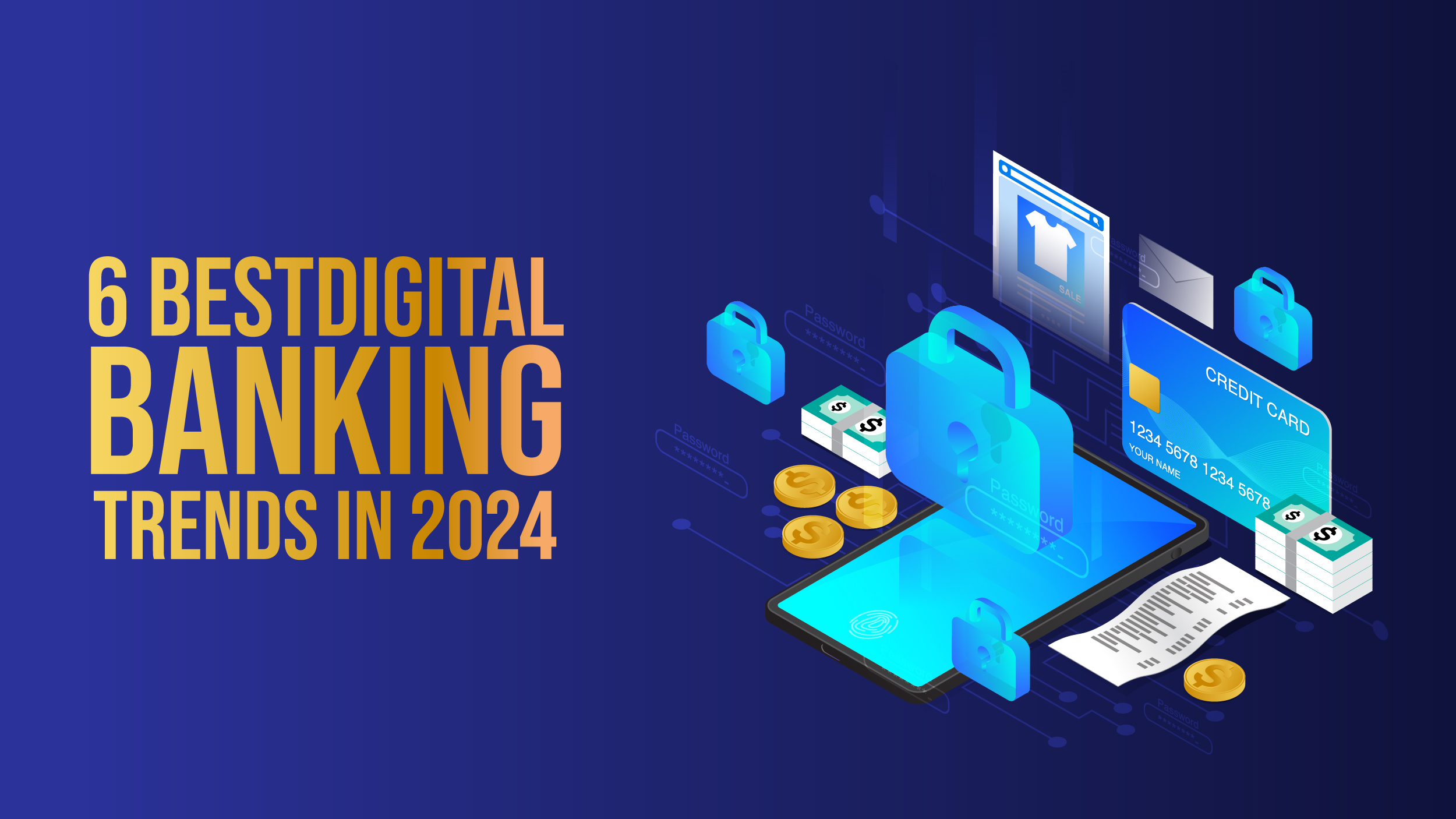Long gone are the times when people used to wait in queues in banks, be it to withdraw cash or deposit it. Digital banking has transformed the way we interact with banks. Since the onset of the pandemic, individuals across various age groups have increasingly embraced digital-only banks and have come to value the convenience of digital banking services. Consequently, it comes as no surprise that online financial services are experiencing continuous growth and enhancement.
Without further ado, let’s dig deeper into the digital banking trends that are shaping the banking industry.
What is Digital Banking?
Digital banking encompasses the utilization of technology, predominantly through online and mobile platforms, enabling individuals to conduct banking activities and access services from anywhere, without the necessity of visiting a physical branch. It consolidates the convenience of online and mobile banking services into a single platform.
This modern approach to banking offers a diverse array of services and functionalities, facilitating various transactions and access to banking products. These services may encompass checking account balances, transferring funds, paying bills, applying for loans, and more.
Why is Digital Banking Important?

Digital banking has gained increasing significance in contemporary society for several compelling reasons:
- Convenience: Digital banking provides unparalleled convenience, enabling individuals to conduct transactions and access services anytime, anywhere via smartphones or computers. With digital platforms, customers can effortlessly manage tasks like transferring funds, checking balances, and paying bills with just a few clicks.
- Efficiency: By streamlining banking processes, digital platforms enhance efficiency, making transactions quicker and more streamlined. Tasks once requiring visits to physical branches can now be completed online, saving time and effort. For instance, regular transfers can be automated, freeing professionals’ time for other essential activities.
Also Read : Ultimate Guide to Sustainable Agriculture: Everything You Need to Know
- Cost Savings: Digital banking benefits both banks and customers by reducing operational expenses. Banks can cut costs by offering online services with lower overheads compared to physical branches. Customers also save money by avoiding fees associated with in-person transactions, such as ATM withdrawals.
- Expanded Services: Digital banking offers a plethora of additional services and features beyond basic transactions. These may include budgeting tools, financial management resources, personalized recommendations, and access to various banking products. Digital banks often provide a more comprehensive and integrated banking experience.
- Paperless Transactions: Digital banking fosters sustainability by minimizing the need for paper-based transactions. Through electronic account statements, individuals can reduce paper waste and lessen the environmental impact of printing and mailing physical documents.
6 Best Digital Banking Trends in 2024

Now that we have a fair idea about banking, let’s see the top digital banking trends.
#1 Digital Banking Trends: Customers Prefer Texting Over Physical Visits
79% of customers acknowledge that digital innovations in banking are notably enhancing the accessibility of banking services.
In response to evolving customer preferences, there’s a growing inclination towards two-way communication with banks, moving beyond conventional one-way mobile notifications. Our research highlights that 53% of respondents feel frustrated when they cannot reply to a mobile message. This signifies a golden opportunity for financial institutions to engage in meaningful two-way digital conversations with their customers, enhancing overall satisfaction.
#2 Digital Banking Trends: Anticipating Queries with Personalized, Interactive Solutions
Nearly 70% of customers want financial personalized advice from banks.
A significant gap exists between customer expectations and the current engagement practices of financial services companies. While 90% of customers express interest in receiving personalized financial advice, the reality falls short, with less than 30% receiving this service. This presents a unique chance for financial institutions to proactively address customer needs and improve experiences. Furthermore, embracing personalized and interactive media on preferred channels can further enrich the banking experience. Our findings underscore the high-value customers place on rich-media interactions via messaging.
#3 Digital Banking Trends: Customers are Ready for Digital and AI-Based Relationships
While banks invest in advanced technologies to enhance customer experience, trust remains a critical factor. Customers are receptive to digital advancements only when trust in their bank is established. Our research indicates a strong correlation between positive experiences and trust, emphasizing the importance of banks demonstrating genuine care and understanding of their customers’ needs. Despite 93% of consumers expressing the desire for their bank to understand their needs, only 33% feel this level of understanding is currently met.
#4 Digital Banking Trends: People Love Tech but Still Crave Human Connections
40% of consumers prefer to talk to a human agent when frustrated
Despite the efficiency of chatbots, human connection remains invaluable to customers, particularly in challenging situations. Our research reveals that 40% of respondents seek human assistance when facing difficulties. To meet customer expectations, the banking industry must strike a balance between digitization and human interaction, allowing for seamless transitions between different channels.
#5 Digital Banking Trends: Privacy and Security are a Must
Maintaining trust through robust security measures is essential throughout the customer journey. Banks must ensure that every interaction feels safe and secure, visibly demonstrating this commitment to customers. Here are some strategies to address customers’ security concerns:
- Providing clear verification of secure mobile conversations.
- Leveraging messaging features within secure banking apps.
- Allowing customers to seamlessly switch between automated and live customer service interactions.
#6 Digital Banking Trends: Online Banking
Online banking provides convenient access to bank accounts from any internet-enabled location. Traditional and digital-only banks offer online accounts, like Capital One’s 360 Checking.
Operating without physical branches allows online banks to allocate resources to benefits like higher savings yields or ATM fee reimbursements. Many top savings rates come from online banks.
Security concerns deter some from online savings accounts, despite their safety being comparable to traditional banks, ensured by FDIC insurance up to $250,000 per account type. Bank websites are encrypted, and multi-factor authentication adds an extra layer of security.
Final Takeaway
Digital banking trends have revolutionized the way we interact with financial institutions and manage our finances. With its convenience, efficiency, cost savings, expanded services, sustainability, enhanced security, and ability to meet customer expectations, digital banking has become an essential part of our lives.




